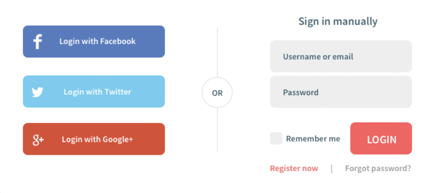With the growing development of advanced marketing and targeting technology, concerns over the management of personal user data have grown.
Apple's iOS 14 feature clearly notifies users of app monitoring, prompting them to opt out with the easy click of a pop-up, in an attempt to keep ahead of rising customer privacy concerns – and possibly to exclude its rivals a little.
To help, Google Chrome, Safari, Firefox, and other major browsers have eliminated third-party cookies, radically altering how they monitor users and manage consumer data.
Because of the significant move away from third-party data, first-party data has become even more important.
To drive advertising and campaign decisions, brands, marketers, and marketing agencies have had to innovate to find better methods to acquire and use consumer first party data.
In the previous blog, we discussed what is first party data and the advantages of using it. In this blog, we will discuss how a business can collect this data from its users.
How to collect First Party Data
Companies and marketers who have previously depended on third-party data must change their tactics to rely more heavily on first-party data as a result of the cookie-free shift. Businesses must rethink their tactics and turn their attention inward, to their own content, consumers, and data.
Both online and offline venues can be used to obtain first-party data. Customers can complete information-gathering surveys, applications, and other forms that your company has set up offline.
To track customer behaviours and content interactions online, marketers may easily add a pixel to their website, social networking platforms, or product sites. User behaviour information is gathered from a variety of sources, including landing sites, applications, CRMs, social network profiles, subscription-based mailings, customer feedback, user surveys, and other sources.
The goal is to ensure that the data you gather, as well as the manner in which you obtain it, complies with the General Data Protection Regulation (GDPR). The purpose of this European Union Act is to offer EU citizens more control over their personal data.
So, what's the best way to get started gathering first-party data?
User Registration
When customers visit a website, companies frequently overlook the easy task of asking them to register. Including a registration option is a subtle method to develop a pool of perfect customer profiles, and it simply takes a few seconds.
The main challenge is enticing consumers to register in the first place, which requires some ingenuity.
Consider giving a first-time customer a 15% discount on a product or service in exchange for their first name and email address. This is also a fantastic approach to improving future email marketing retention rates.
Newsletter sign-ups and 'Share with a friend' buttons are two other ways to gather email addresses.
Social Sign-On
Social Sign On is a method that prompts users to sign in using their Google, Linkedin, Twitter, Apple or Facebook accounts for example.
Users can sign in and access your content faster without having to remember another password, while businesses obtain first-party data like name, age, gender, job title, ID, profile URL, hobbies, and location

Progressive Profiling
Following the collection of user registration data, you may go on to a more detailed profiling of users. Here you may look into firmographic, demographic, and other forms of data to find out more about your target market and get insights.
However, be cautious: it's possible to turn off potential clients by asking for too much information at first. Progressive profiling necessitates careful thinking in order to gradually acquire access to more data. Furthermore, ensure that the submitted information is retained and stored safely by following cybersecurity procedures and equipping your website to seamlessly manage any DDoS assaults. You must be trustworthy in order for your clients to share extra information with you.
Event-Based Tracking
You can acquire detailed behavioural data about your users using event-based tracking.
There are a number of analytics solutions that make tracking events straightforward. These handy tools make it possible to track events and input first-party data into other systems. From here, you may begin to comprehend your ideal consumer and their characteristics.
Surveys
Simply asking a consumer why they do (or don't do) something is sometimes the best way to find out. To not only connect with the consumer but also acquire first-party data, conduct a fast survey or poll in exchange for a free gift or discount.
Customer Feedback and Reviews
Requesting feedback via email, social media, or a website may yield a gold mine of first-party data. Client profiles may be built by linking completed reviews to your customer base. They can also be linked to inventory management software to help you figure out how many favourable ratings you have depending on the number of units sold.
Reviews and feedback can also assist you in seeing all sides of the story - the positive and, if applicable, the negative. You may optimise and personalise your future product development, marketing, and interaction with your consumer base by taking all feedback into account.
Summary
The fact is that first-party data is more reliable than second or third in many respects. It is data gathered directly from the user on your own website/app. Because no other organisation has the same data on that individual consumer, first-party data is likewise unique to you. If you haven't previously implemented a strategy to make use of this type of data, now is the time to do so.
Capture the most crucial information about your website's users with engaging content, and you won't even blink when third-party cookies are phased out. Are you prepared to make your own interactive content? Schedule a free demo to understand how we can help you with your first-party data.
